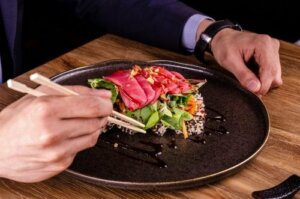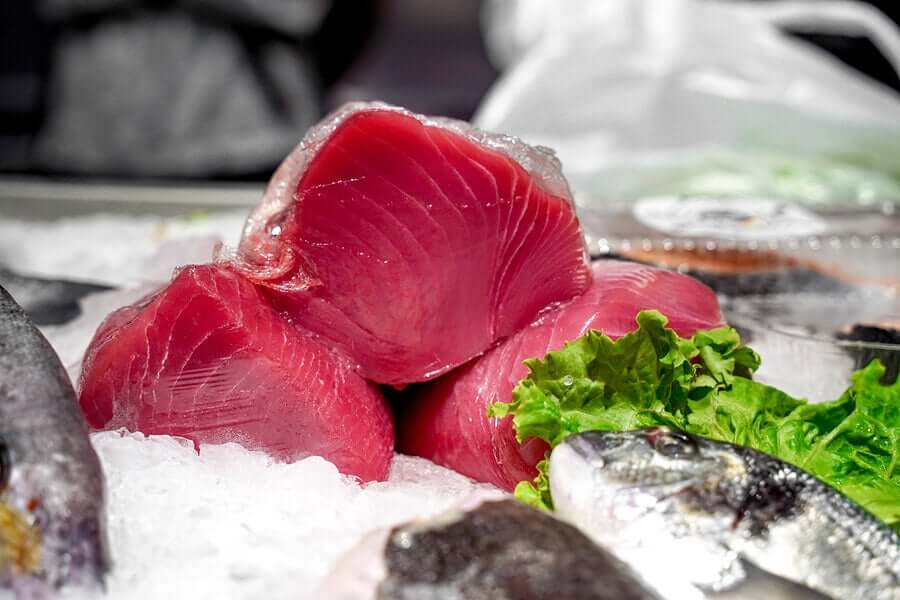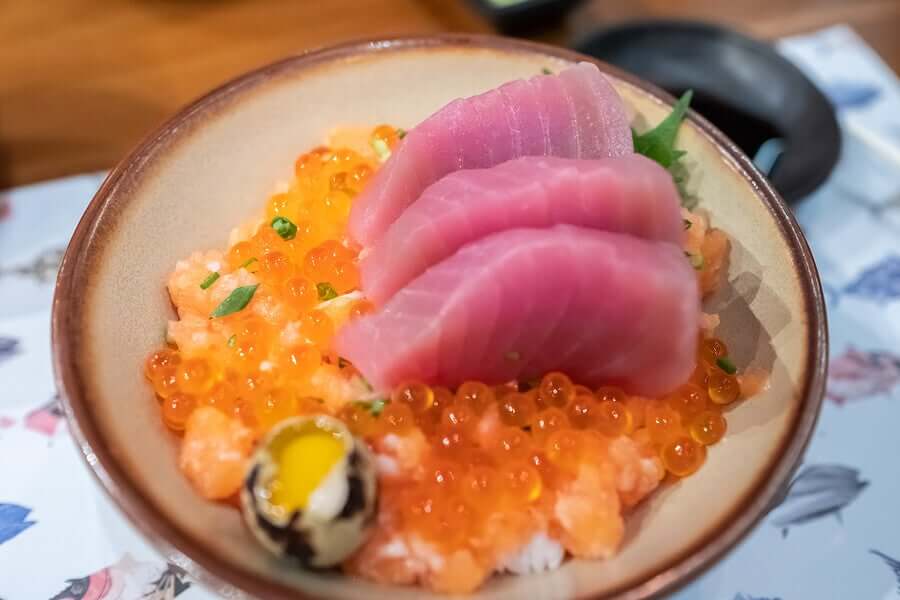Can You Eat Raw Tuna?


Written and verified by the nutritionist Saúl Sánchez Arias
In recent years, Asian influences have introduced consuming raw fish, such as raw tuna, into our gastronomy. Both with sushi and other types of preparations, it’s common to consume products from the sea without cooking them first. However, this can pose a health risk if the people handling the food don’t take the necessary hygienic measures. SO, can you eat raw tuna?
The product must first be frozen
The raw fish consumer’s worst enemy is anisakiasis, according to a study published in the International Journal for Parasitology. This parasite can cause serious illnesses in humans and even death. For this reason, you have to be very cautious in the handling of the products to avoid the reproduction of the parasite and its eggs.
It’s essential to subject tuna to a freezing process. At a temperature of 31ºF (-35ºC), we need 15 hours to ensure the complete destruction of this organism. However, at a temperature of -4ºF (-20ºC) the time required is 24 hours.

The main symptoms of anisakiasis poisoning are stomach pains, vomiting, and diarrhea. Normally, the parasite dies when the fish undergoes a cooking process, however, it can remain alive if consumed raw or marinated.
Therefore, it’s essential to ask the fishmonger if the product we’re acquiring has been subjected to a freezing process that ensures the destruction of anisakiasis. Otherwise, we need to carry out this process at home.
Also read: Shellfish Allergies: Symptoms and Treatments
Thawing is another critical point
You should thaw tuna out in a cold place. Avoiding room temperature or heat is a good way to prevent the reproduction of possible pathogenic organisms or the hatching of roe present in the product.
Thawing should be slow in order not to lose organoleptic characteristics, and, whenever possible, in the refrigerator. This way, we can ensure the prevention of possible food poisoning or damage to the quality of the product.
It’s also important to not break the cold chain when the product is in a frozen state. Often, tuna can be purchased frozen, and in these situations it’s essential to ensure that the product doesn’t fall below -18ºC at any time.
Use acids for cooking
In preparations with raw tuna, such as in a tataki, it’s important to use a bit of acid that contributes to guarantee the healthiness of the product. Generally, the acid of choice is lime or lemon juice. This improves the flavor of the fish and creates a hostile acid environment for pathogenic organisms.
Discover more: The Effects of Mercury in Fish
Dangers of consuming raw tuna

There are some situations where it’s not advisable to consume raw fish. This is the case of pregnant or immunosuppressed people, according to a study published in the journal Public Health Nutrition. Due to their greater sensitivity to pathogenic organisms, a small bacterial load could lead to the loss of the fetus or a worsening of the individual’s health.
Therefore, in such individuals, it’s essential we ensure that the fish is properly cooked before consumption. However, the product should be properly frozen and thawed prior to cooking to increase safety and reduce the likelihood of harboring pathogenic organisms or roe.
You can eat raw tuna with certain precautions
Consuming raw fish is influenced by Asian cuisines. It can be a delicacy and its consumption is totally safe when we take proper hygienic measures. Not breaking the cold chain and a correct freezing process are the key points when consuming raw tuna.
This will ensure proper food safety and adequate organoleptic quality. From this point on, there are many possible preparations with this type of product. We can prepare sushi, pokes, ceviches, etc., with the certainty that the food won’t cause any harm to our bodies.
In addition, you can enhance the safety of the food by adding some kind of acid component. However, it’s important that you don’t store these types of dishes for a long time once you’ve prepared them.
Cold storage isn’t entirely good, firstly because of the loss of taste, and, secondly, because it increases the probability that the roe of a pathogen will hatch and the product will become dangerous to health.
All cited sources were thoroughly reviewed by our team to ensure their quality, reliability, currency, and validity. The bibliography of this article was considered reliable and of academic or scientific accuracy.
- Mladineo I., Trumbic Z., Radonic I., Vrbatovic A., et al., Anisakis simplex complex: ecological significance of recombinant genotypes in an allopatric area of the adriatc sea inferred by genome derived simple sequence repeats. Int J Parasitol, 2017. 47 (4): 215-223.
- Taylor C., Emmett PM., Golding J., A review of guidance on fish consumption in pregnancy: is it fit for purpose? Public Health Nutrition, 2018.
This text is provided for informational purposes only and does not replace consultation with a professional. If in doubt, consult your specialist.








